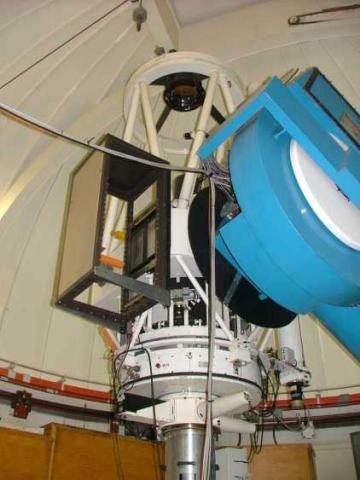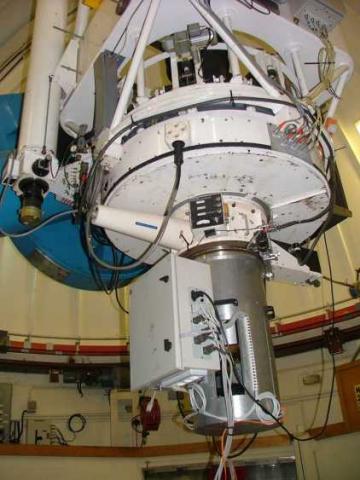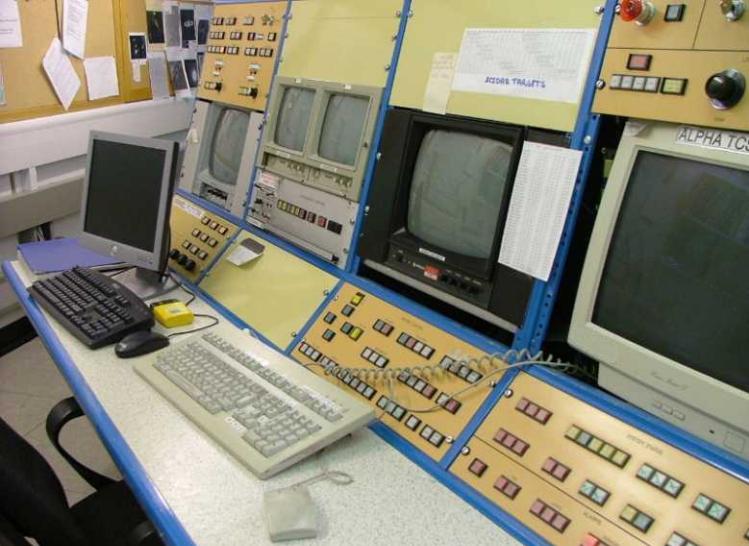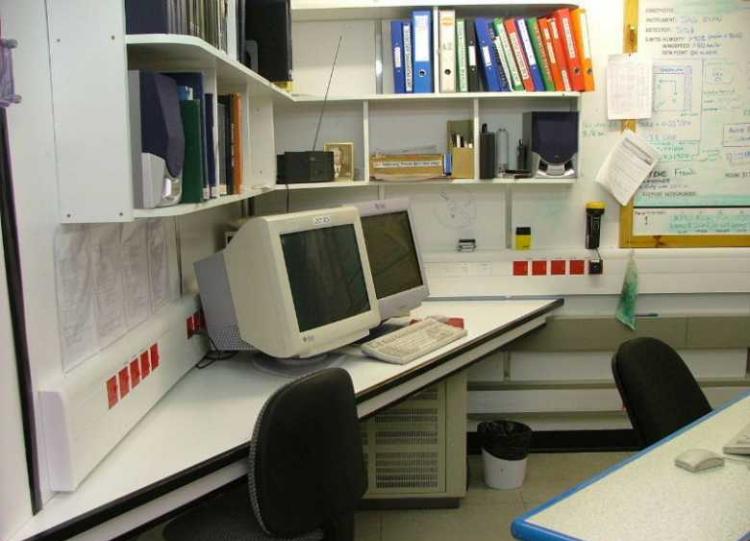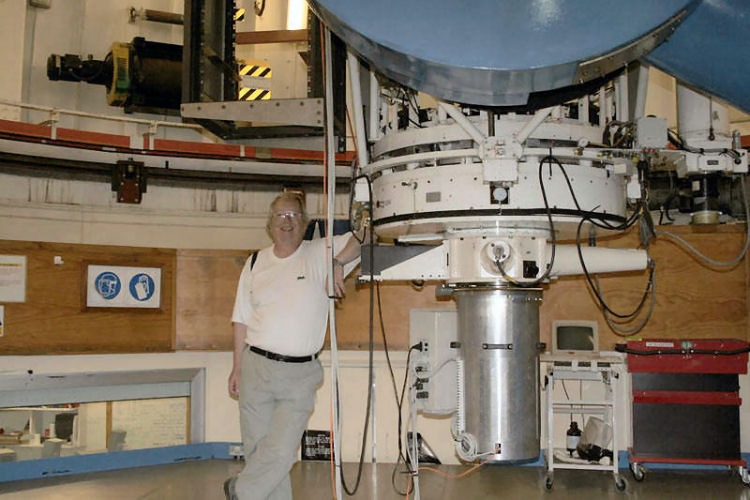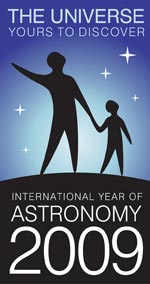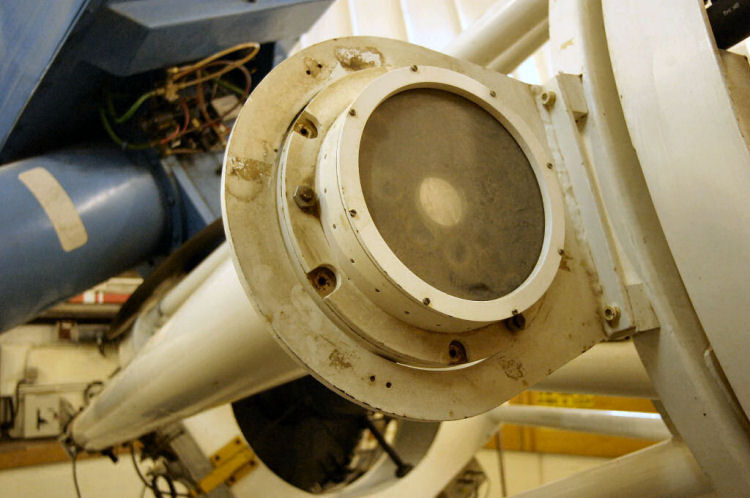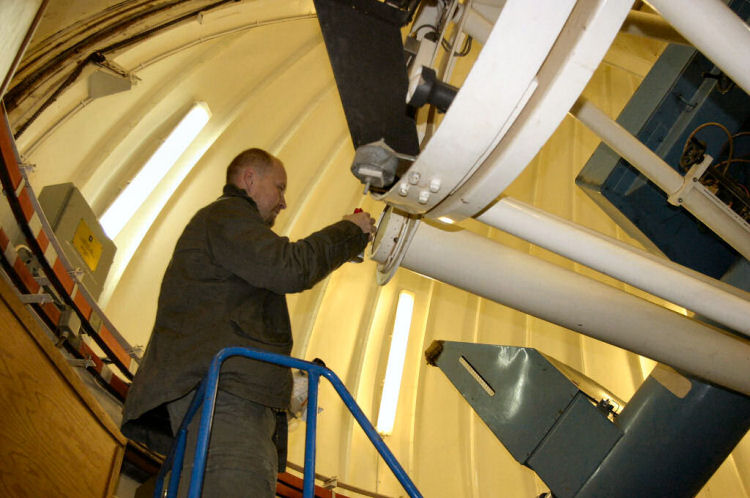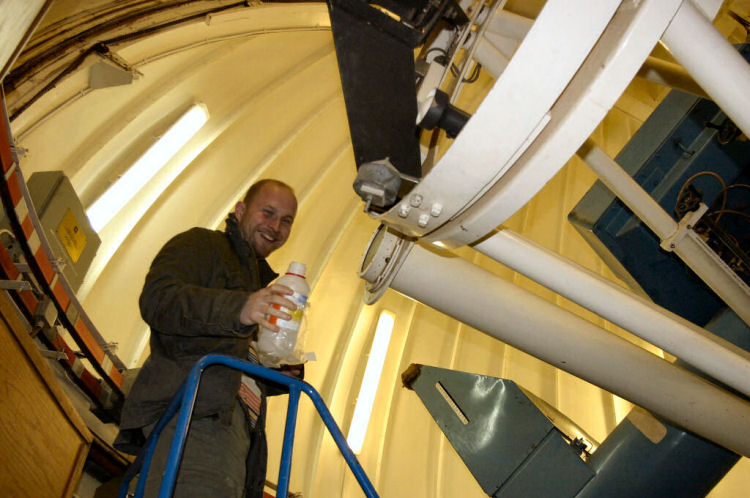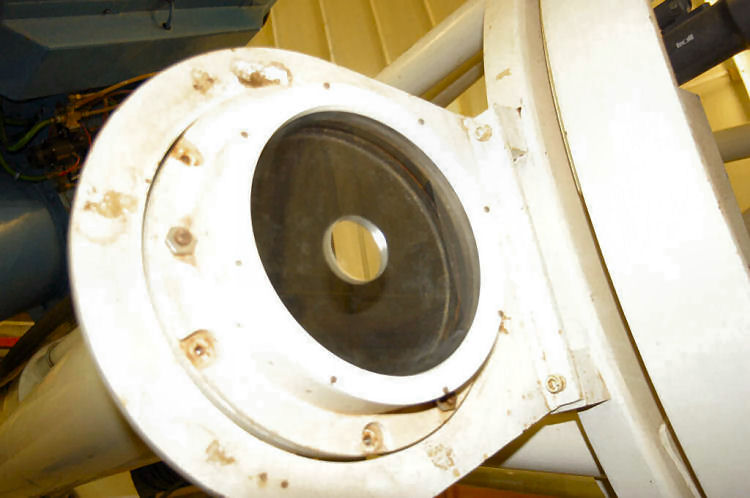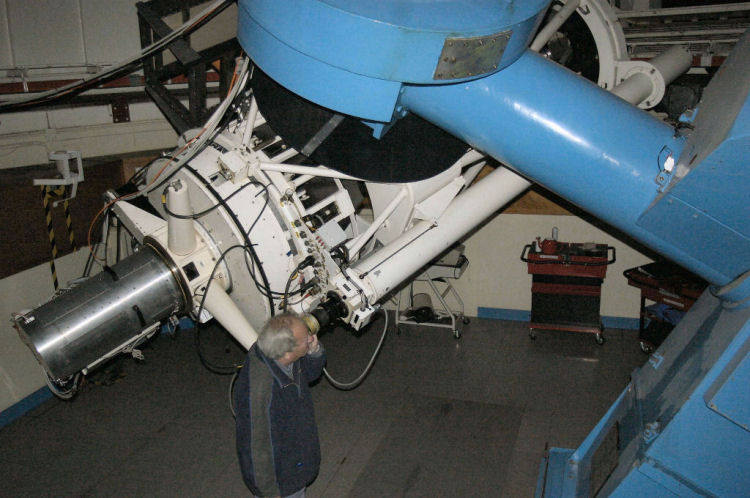UPDATE: The JKT was in use by the ING observing community from 1984 until July 2003. Over the next decade, it remained part of ING and was in occasional use for various projects (e.g. SCIDAR characterisation of atmospheric turbulence above the observatory).
As of 15 Jan 2014 the JKT is owned by the Instituto de Astrofísica de Canarias (IAC), and is operated by the Southeastern Association for Research in Astronomy (SARA) in the USA and has been fitted out with a new telescope control system (TCS) and camera. The JKT resumed operations as a robotic telescope in October 2015. See Press release for more info.
In my time, the JKT was used almost exclusively with the f/15 optics. The only time the f/8 optics were fitted was when using the wide field photographic plate camera. As the JKT now forms a part of the SARA network and the existing telescopes are fixed at using an f/8 focal ratio (or close to) - To maintain a similar field of view, the f/8 option was the natural choice for the re-commissioned telescope.
The JKT is a versatile telescope in that it can work at f/15 as a classical Cassegrain or at f/8 (the Harmer-Wynne system) producing a highly corrected flat focal plane of 90 arc-minutes diameter suitable for astrographic work.
Over the years, the JKT produced some excellent science, but due to financial cutbacks the JKT is no longer supported by the ING. The last observations with the common user CCD camera were made in August 2003. However, I was pleasantly surprised when asked if I would like come out of retirement to re-commission the telescope in February 2004. The telescope was requested for use by the Instituto de Astrofisica de Canarias (IAC) for a long term observing program using their SCIDAR instrument for the measurement of atmospheric turbulence. This I did and after fixing some minor faults, the JKT to the best of my knowledge has been working well ever since.
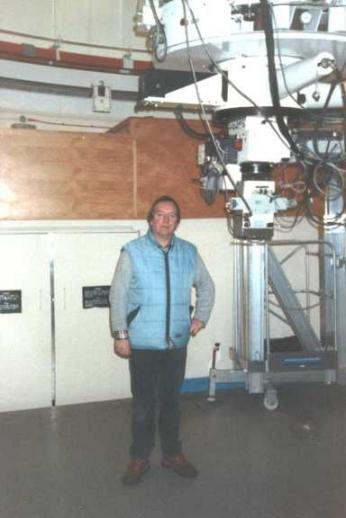
Photo of me in the JKT probably taken sometime in the late 1980's. It must have been in the winter seeing my attire! The instrument fitted below the general purpose 'Ellis A&G box' is the Peoples' Photometer which I was responsible for maintaining. A troublesome instrument at times!
The JKT had a far greater suite of common user instruments than the other ING telescopes when it was in regular use. These being:
- The JKT CCD A&G Box (JAG)
- The Richardson Brealey Spectrograph (RBS)
- The Wide Field Photographic Plate Camera (WFC)
- The Multi-Purpose Fotometer (MPF)
- The Peoples' Photometer (PP)
- The Queens University of Belfast Echelle Spectrograph (QUBES)
Occasionally, there were visiting university instruments attached also: The Hatfield Photometer, the Leicester Photometer and the Durham Polarimeter are some that I remember.
In later years with the need to cutback on maintenance support, only the JAG was offered which I looked after until I retired. I could go up there today and still remember how to cable up and test out the JAG or the PP as I done it so many times!
I enjoyed working with the JKT; probably more so than on the larger telescopes. Sometimes there were nights allocated for engineering work and when this was done, I became an astronomer for the rest of the night taking images for PR use. A most enjoyable experience.

The JKT building. Photo taken in 1986
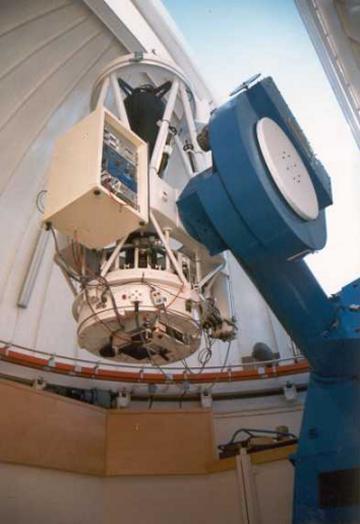
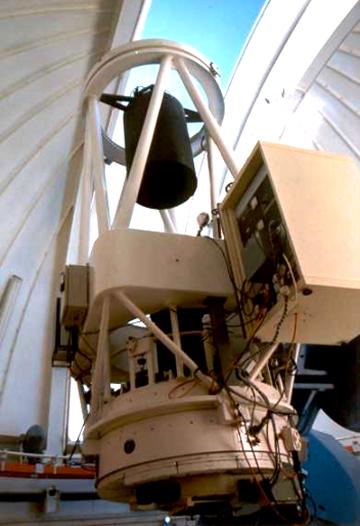

Photo taken during the f/8 optics change
The top ring assembly containing the spherical secondary mirror has been fitted along with its large sky baffle tube. The f/15 top end ring (with a protection cover over the mirror) is now waiting to be craned down to the instrument store. The cones around the circumference of the ring ensured the optical alignment remained correct when changing between secondary mirrors, but in practice a collimation check using an alignment telescope when the f/8 optics were fitted was done.I can still picture 'Wol' balanced on a step ladder with a spanner in his hand tweaking the adjusters of the mirror cell and none too happy when he found after making a measurement that he had turned one in the wrong direction :-)
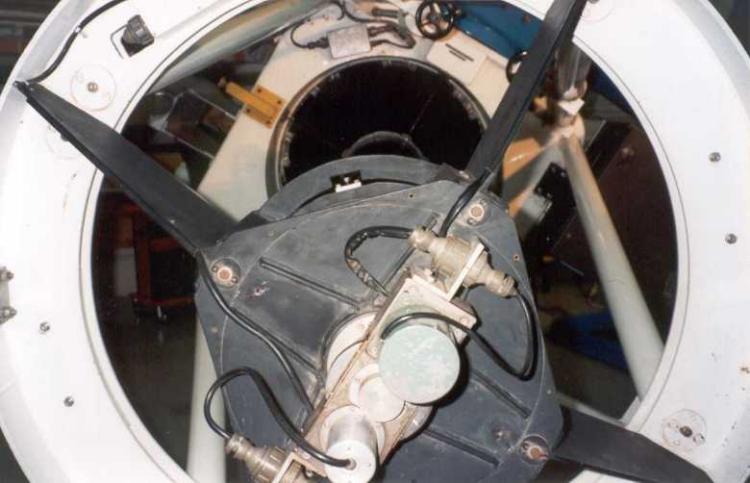
Looking down the tube with the telescope in the access park (horizontal) position.
The only 'electronics job' needed with this instrument change was to fit the focus drive cables to the connector panel at the top of the truss and later to check out the WFC. A very simple instrument with just a roller blind shutter (that was not unknown to occasionally jam!), a calibration lamp source and a photo-multiplier tube head for the autoguider.I recall on one occasion the autoguider failed, but this didn't deter ex-RGO astronomer Derek Jones from losing valuable observing time! He continued in the time honoured way of hand guiding the telescope from out in the dome for the rest of the night.
